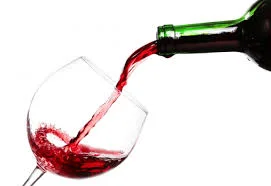Tasting one winemaker’s mature chardonnays along with current ones: not anticipating much from the older ones and being happily surprised.
Long Island: Wolffer Tasting, Chardonnay
Have you ever been proven wrong and thoroughly enjoyed it? I did exactly that on a recent evening in Sagaponack with Roman Roth, the winemaker at Wolffer Estate. Along with a few of his associates at the winery and some friends, he and I tasted Wolffer chardonnays as old as the 1992 vintage and as new as the 2003. My expectation was that the older bottles would be, if not exactly over the hill, past their peak. Such expectations are theoretically justified.
Not all wines improve with age. To the contrary, most wines we buy should be consumed young and fresh, generally within a few years of bottling. The tannins in red wines might mellow a bit in the bottle, but the overall characteristics will not significantly shift, and certainly not to the extent that, say, a standout Bordeaux vintage from a prominent chateau will gain complexity over the years. Even wines that will gain ground do so at different rates and in different ways. White wines, with minimal amounts of tannin, are far less likely than reds to need or want the enhancing effects of age.
When we speak about aging, we can be referring to what the winemaker does in the winemaking process, which is aging in the barrel, or we can talk about what happens after that, which is bottle aging, and may be done by the winery, the wine merchant, the restaurant or the consumer. And there are variations on this. Some wines might be barrel aged until they almost ready to drink while others are meant to sit in the bottles for some years. On top of this, vintage and quality make a crucial difference. Better vintages gain more from age, as do high quality wines. A bottle of ordinary table wine can be fine now, but it won’t be any finer next year. In the worst case, wines badly aged or over- aged can develop aroma and taste characteristics that are not typical of the varietal.
In the case of Mr. Roth’s wines, I expected that the oldest vintages would to some degree have flattened out, lost some of their fruit qualities and perhaps taken on heavy oak flavors. I was wrong. The reason, I believe, is that these chardonnays are made in traditional European ways, fermented in French oak, classically structured and capable of evolving into subtle and complex wines. In depth and longevity they approach in a smaller way some of the important white Burgundies of the Cote de Beaune, exemplars of chardonnay wines.
This is a great compliment to Mr. Roth’s skills. We can buy excellent chardonnays from all over the world, and locally on Long Island our wineries are producing more focused and engaging chardonnays each year. Almost all this production should be consumed on release or shortly thereafter. Only a small part of the chardonnay made here and elsewhere becomes more delicious with time. Some of Mr. Roth’s vintages can be placed in this latter group. All the chardonnays we tasted were Estate Selections, meaning the top caliber wines of that year, usually from the oldest grapevines. Mr. Roth, like all winemakers I know, does not produce an Estate Selection (or whatever the winery chooses to call its premium wines) in years when the harvest is poor.
His wines obviously started out with enough acidity and flavor compounds to succeed over time, and were fermented and then aged in ideal conditions. Any imbalance would have upset the final result. Naturally some years were more attractive than others. The differences most likely relate to the original vintage, with the better ones gaining intriguing finesse and character as they develop. Happily, not one had gone bad over the years.
The 1995 is a knockout, rich, opulent, with mineral notes and a long finish. The 1997 seems young and lively with tantalizing hints of oak, and a promise of delights into the future. The 2001 is perhaps the most complex and enticing, as you might expect from what was the best vintage year on Long Island. Some of the older wines as well as the current 2001 vintage ($27) are available for sale at the Wolffer Estate tasting room.



